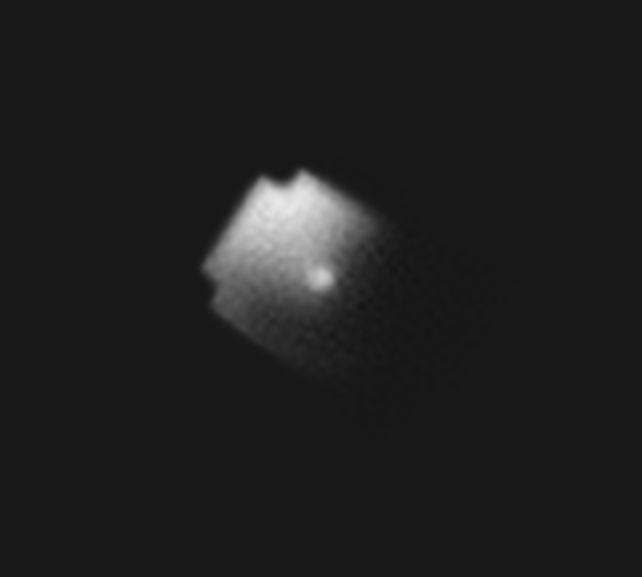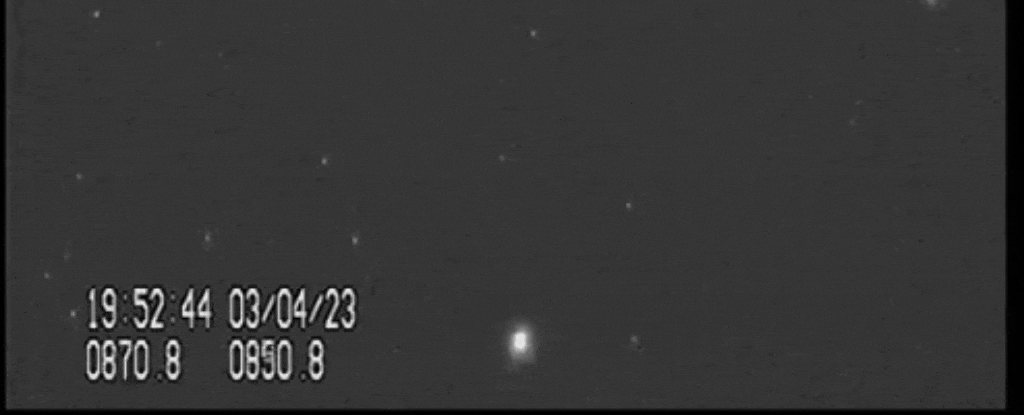The problem of satellite swarms in low-Earth orbit appears to be getting worse. A satellite launched last September has become one of the brightest objects in the night sky.
As if that's not bad enough, the satellite, named BlueWalker3, is only a prototype, and the company behind it – US-based AST SpaceMobile – wants to build a whole constellation of these things.
According to an international team of researchers led by astronomer Sangeetha Nandakumar of the University of Atacama in Chile, it's a matter of some urgency that more effective steps are taken to mitigate the impacts of these satellite swarms.
The researchers warn, "Despite many efforts by the aerospace industry, policy makers, astronomers and the community at large to mitigate the impact of these satellites on ground-based astronomy, with individual examples such as the Starlink Darksat and VisorSat mitigation designs and Bragg coatings on Starlink Gen2 satellites, the trend towards the launch of increasingly larger and brighter satellites continues to grow."
Here on Earth, there are generally pretty stringent regulations about what's allowed to happen in airspace. Beyond a certain altitude, though, Earth's dominion ends, and outer space takes over. It belongs to everyone, and no one, and without regulations governing what goes up there, it's rapidly turning into an absolute clusterjumble.

According to satellite tracking website Orbiting Now, there are currently 8,693 artificial satellites circling our planet, most in low Earth orbit.
In total, over 16,650 objects have been launched into space. Thousands of those have been launched since 2019, with nearly 5,000 Starlink satellites alone.
And it seems everyone wants a piece of the satellite constellation pie. Scientists estimate that some 100,000 constellation satellites will be in Earth orbit by 2030, which will dramatically alter the night sky. Starlink is trying to minimize the impact of its satellites, at least, coating them with paint that reduces their brightness and fixing leaking radio signals.
But BlueWalker 3 emphasizes the urgent need for regulation. The satellite is a communications satellite, "designed to generate power from space and deliver cellular broadband directly to your phone," according to AST SpaceMobile. Its antenna is 64.3 square meters (693 square feet), and it was packaged into a cylinder called the Launch Vehicle Adapter (LVA) to get it into space.
Nandakumar and her colleagues took observations of the satellite as it got into position, jettisoned its LVA, and deployed. BlueWalker 3 started off pretty bright, with a magnitude of 1 – brighter than the Polaris system. It dropped to magnitude 6 by 25 December 2022; that's about as dim as the human eye can see unaided.
By 4 April 2023, however, the satellite had brightened again to magnitude 0.4. That's about as bright as Betelgeuse.

"Optical observations confirm that BW3 increases in brightness when BW3 is at a higher elevation above the horizon, and indicate that the range between the observer and BW3 is a primary contributor to the apparent/observed magnitude," the researchers write. "The apparent brightness of BW3 also shows correlation with solar phase angle and appears brighter at high phase angles."
They also found that as it was jettisoned the LVA reached a magnitude four times higher than the recommendation made by the International Astronomical Union's Dark and Quiet Skies II reports. In addition, it took 4 days for the LVA to be listed in public satellite catalogs following jettison, which meant it posed an invisible hazard for ground operators tracking satellite paths to prevent collisions.
The more satellites we crowd into Earth orbit, the more difficult collision avoidance becomes.
They also pose a huge problem for ground-based astronomical observations. Not only do they present a source of light pollution in the critical crepuscular hours in which asteroid detections are made, they can interfere with the wavelength bands in which radio telescopes operate.
Nandakumar and her team strongly suggest satellite companies put in the work to reduce the harm of their machines before punting them off into space, willy-nilly.
"Impact assessments for satellite operators prior to launch could help ensure that the impact of their satellites on the space and Earth environments is critically evaluated," they write.
"We encourage the implementation of such studies as part of launching authorization processes."
The research has been published in Nature.
